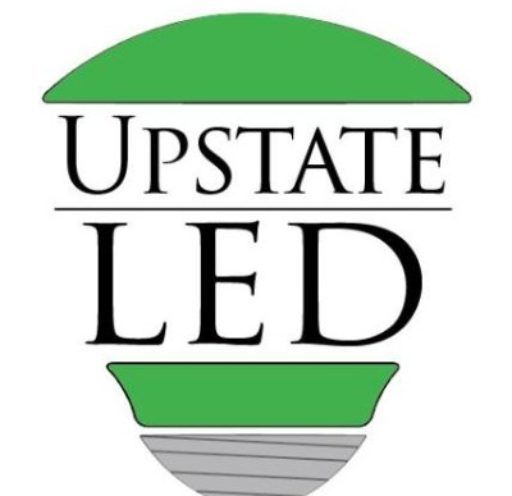Upstate LED customers are experiencing several welcome benefits with their LED lighting.
These surprising benefits are drastic reductions in eye strain, less workplace stress and relief from headaches and migraines. Upstate LED lighting only uses high quality LED lighting for maximum savings and longevity. The once unavoidable adverse health effects of fluorescent lighting now a thing of the past.
Although generally imperceptible to the human eye, fluorescent lighting has a flicker. It’s the flicker itself that’s actually a Migraine trigger. Thus, it doesn’t matter what kind of fixture houses the tubes. People who are sensitive to that flicker will have a problem with it.
This flicker found in all fluorescent lighting is caused by the ballast component of the circuitry. Upstate LED lighting removes this harmful component and retrofits your existing fixtures to state of the art LED lighting..
Upstate LED lighting is looking forward to helping small businesses become more profitable and environmentally conscious and safer with high quality non ballast LED products. Call us today for your free LED analysts
UpstateLED.com 800-331-4250
SOLON, Ohio, Jan. 17, 2017 (GLOBE NEWSWIRE) — Energy Focus, Inc. (EFOI), a leader in LED lighting technologies, today unveiled the results of a workplace environmental health study that supports the case for replacing fluorescent office lighting with greener, healthier, flicker-free LED lighting. A variety of health issues associated with optical flicker, including eye strain and aches, headaches, inability to focus and visual disturbances like blurred or temporary loss of vision, were all cited in the study as serious health hazards tied to lighting, predominantly fluorescent, in the workplace.
The study investigated a wide range of factors that can lead to an unhealthy work experience, including air quality, temperature issues and light quality from a variety of light sources. Among the top workplace complaints, 69 percent of workers have reported a problem with office lights, from glare to brightness to excessive flicker.
In fact, 75 percent of employees said they would leave a job if it was in an unhealthy building and 71 percent of employees surveyed experienced a health issue that they specifically attributed to the lighting in their office. One problem with office lighting includes substropic flicker, which is typically invisible to the human eyes but has scientifically been proven to put unnecessary stress on the human brain. Eliminating flicker, which is a key mission of Energy Focus, can help reduce headaches, eyestrain and other discomforts in the workplace. People with sensory disorders like autism or epilepsy can be affected even more deeply.
Flicker is such a concern that nearly half of those surveyed – 47 percent – expressed that they would prefer a bad Internet connection to flickering lights and, most notably, 94 percent feel that flickering lights should be banned from all workplaces. Despite these concerns, 98 percent of commercial buildings still use fluorescent lighting, and most LED lights bring even higher levels of flicker than fluorescent. Therefore, substropic flicker remains present in most work environment.
“Consumers are raising their standards for wellness, and they expect these to not only be reflected at home, but also in the place they spend the majority of their day – the workplace,” says Jerry Yudelson green building expert, a U.S. Green Building Council LEED® Fellow and formerly president of the Green Building Initiative. To improve the health of a workplace, Yudelson, a world renowned sustainability thought leader since 1970s and author of 13 books on green building, recommends that consumers be vocal about their concerns and request that their employers replace fluorescent lighting to flicker-free LEDs.
The Institute of Electrical and Electronic Engineers (IEEE) in its standard document, PAR 1789-2015, defines acceptable limits to flicker in LED-based lighting systems. The equation recommended by the standard calculates the maximum recommended flicker percentage by multiplying the frequency of a light source by 0.08. For example, at 120 Hz, which is common in most lighting applications, ten percent maximum flicker is allowable to avoid human health hazards in most applications. Energy Focus, Inc. manufactures the first and thus far the only UL certified lighting to have less than one percent flicker.
“Whether we recognize it or not, flicker in lighting has adverse impact on how we feel and our overall health on a day-to-day basis as modern workers spend 90 percent of the day under artificial lighting,” said James Tu, CEO and President of Energy Focus. “As the lighting industry is finally asking how much flicker is acceptable, led by the flicker standard from IEEE in 2015, at Energy Focus we are committed more strongly than ever to making flicker-free the new gold standard of lighting quality for the lighting industry.”
Consumers interested in learning more can visit www.energyfocus.com/flickeroff which features educational materials and a pre-drafted email that they can send to their facilities manager – requesting the change to Energy Focus flicker-free LEDs.
Methodology
The Energy Focus workplace healthiness survey was conducted by Wakefield Research among 1,000 U.S. full-time office workers, between December 6 and December 12, 2016, using an email invitation and an online survey.
